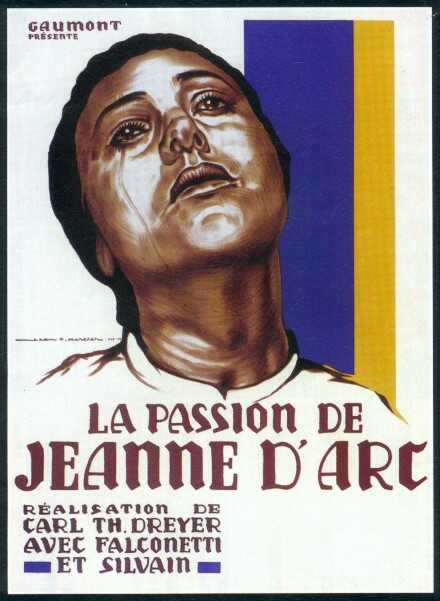
Director: Carl Theodor Dreyer
I often think of the court-room drama as the product of the era of the talkies, as such plots tend to have scenes of great speeches and people incriminating themselves through accidental slips of the tongue. Dreyer's film is ostensibly this type of film, portraying the historical event of Joan of Arc's trial after being heavily involved in the Hundred Years' War. However, as it is silent, the actual speech of the characters are less prominent. It is their facial expressions that reveal the loyalties and deviousness of some, and the simple but profound faith of Joan.
When I was around eleven or twelve I was fascinated by the story of Joan, this young woman whose belief led her to move outside the restrictions of her gender and poverty and become acquainted with the Dauphin and participate in several battles of the War. Whether you are religious or not, Joan of Arc is an incredibly person from history.
Dreyer's film is sympathetic to Joan's plight, the camera holding her face in close-up throughout the film, capturing the despair and belief that moves across her face, and the tears she quietly cries. Renee Jean Falconetti is wonderful as Joan, and you feel each accusation with along with her, as well as the disappointment with herself after signing a confession.
Dreyer's camera placement is quite beautiful, and the simplicity of the sets emphasise the humans who occupy the spaces. The camera angles are rarely level with their subjects, either high- or low-angle. The last section of the film has Joan almost exclusively in low-angle: she is above the audience, already given the status of matyr and saint by the story.
This is a very beautiful and moving film that shows that silent films were not always comedies or melodramas, or needed huge, epic scenes to make them cinematic. It shows film's ability to reveal character through close-up, without having to rely heavily on dialogue.
One of the great weaknesse of silent movies is the persistent over-acting, the need for melodramatic gestures to substitute speech. In The Passion of Joan of Arc there is no over-acting, only expressionism. The faces are windows to the souls within and we can see right in. For this reason this is the golden standard of silent drama.
ReplyDeleteI agree. It feels like Dreyer and Falconetti understood the subtlety of this new medium, and they left stage acting at the door of the set.
Delete